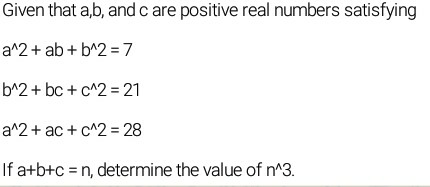
AllQuestion and Answers: Page 1428
Question Number 68926 Answers: 0 Comments: 0

Question Number 68925 Answers: 0 Comments: 2

Question Number 68924 Answers: 0 Comments: 0

Question Number 68923 Answers: 0 Comments: 2

Question Number 68912 Answers: 1 Comments: 0

Question Number 68899 Answers: 0 Comments: 9
Question Number 68898 Answers: 0 Comments: 7
Question Number 68885 Answers: 0 Comments: 2
Question Number 68879 Answers: 0 Comments: 2
Question Number 68878 Answers: 0 Comments: 0
Question Number 68877 Answers: 0 Comments: 1
Question Number 68876 Answers: 0 Comments: 2
Question Number 68874 Answers: 0 Comments: 1
Question Number 68873 Answers: 0 Comments: 1
Question Number 68872 Answers: 0 Comments: 0
Question Number 68871 Answers: 0 Comments: 0
Question Number 68870 Answers: 0 Comments: 0
Question Number 68869 Answers: 0 Comments: 0
Question Number 68868 Answers: 0 Comments: 1
$${find}\:\int\:\:\:\:\frac{{dx}}{{a}+{cosx}}\:\:{with}\:{a}>\mathrm{0} \\ $$
Question Number 68860 Answers: 0 Comments: 2

Question Number 68855 Answers: 0 Comments: 2

Question Number 68836 Answers: 1 Comments: 0
Question Number 68835 Answers: 1 Comments: 4
Question Number 68831 Answers: 1 Comments: 3
Question Number 68830 Answers: 0 Comments: 0
$${please}\:{can}\:{someone}\:{check}\:{question}\:\:\:\mathrm{68728} \\ $$
Question Number 68825 Answers: 1 Comments: 0

Pg 1423 Pg 1424 Pg 1425 Pg 1426 Pg 1427 Pg 1428 Pg 1429 Pg 1430 Pg 1431 Pg 1432
